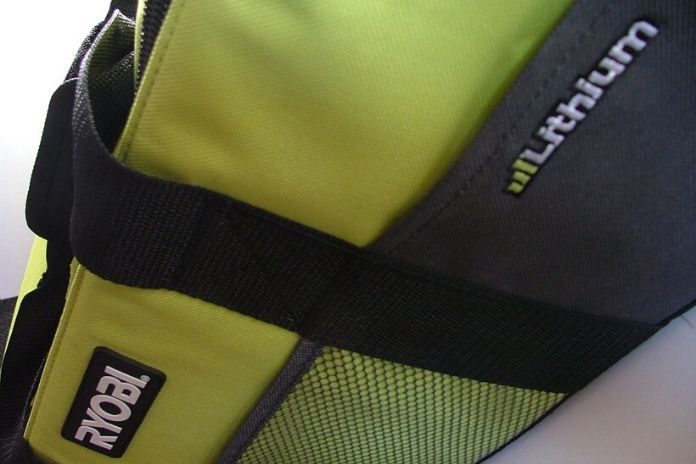
When it comes to power tools, especially the cordless ones, Ryobi is a well-recognized and well-respected brand. Widely known for tirelessly producing top quality tools for affordable prices, the company cemented its name as one of the top manufacturers today with the release of the ONE+ system.
As one of the leading brands that have the most extensive range of DIY cordless tools, Ryobi designed the system to have one versatile, interchangeable battery to fit and power more than one hundred power tools. However, despite the tireless efforts and innovations, there are still battery issues that haunt this remarkable system.
How to fix a Ryobi battery that won’t charge? Fixing a Ryobi battery that doesn’t charge will depend on what prevents it from charging. So, the best thing to do after finding out the battery is not charging is to do quick troubleshooting and determine what prevents it from charging.
From there, take the necessary and appropriate steps to address the issue. Just so you know, there are several issues that can cause a Ryobi battery not to charge.
The battery may be dead; it can be due to a faulty charging system or its components. Obstructed terminals may also cause the problem, or maybe the battery is too hot or too cold. Another common reason that a Ryobi won’t charge is that it entered the sleep mode.
With all of that said, a direct and conclusive answer for the question is impossible, cause how can you fix something that you don’t know what to fix or what is causing the problem.
So if you are having issues with a Ryobi battery that won’t charge, your best bet is to troubleshoot it first to determine the culprit and proceed with the proper fix. Or you can also take the option of taking it to the service center.
Let me guess you are having an issue with your Ryobi because it doesn’t charge, and you are trying to look for a solution then ended up here. Well, you got an answer earlier, but I doubt it that you haven’t done the troubleshooting part yet.
So, I am encouraging you to stay for a while as I will go through the common problems that prevent a Ryobi battery from charging and the appropriate fixes for these issues.
4 Common Causes Preventing a Ryobi Battery from Charging
Earlier, I mentioned that there several issues that can cause a Ryobi not to charge. And fixing the battery to get it to charge again depends on what prevents it from charging.
Fortunately for us, Ryobi is a trendy brand when it comes to DIY cordless tools, and there are plenty of weekend warriors who use these power tools. A lot of them may encounter these issues, and they are very generous to share them, allowing us to be aware.
Here’s a list of the most common issues causing Ryobi batteries not to charge. Being aware of these will allow us to figure out how to address them and maybe get lucky to come up with the right solution.
So, check them out and take some notes!
Read related article: Ryobi Battery Warranty
1. Battery Already Reach the End of its Cycle
Any battery, regardless of its type, brand, and specs, will come to an end. That’s the fact we all have to accept. Like any other battery, Ryobi batteries have a certain amount of charging cycle that determines their lifespan, and reaching this point will render them useless and considered dead.
If your Ryobi battery has seen some years, one of the reasons why it doesn’t charge is because it is dead. Keep in mind that the average life expectancy of the Ryobi battery is around two to four years. It may even last up to five or six years if it mostly spends its time on the shelf. If you have been using the battery for years, there’s a possibility that it is dead.
2. Somethings Wrong With the Charging Components
One of the vital aspects of charging is to have a firm and flawless connection between the battery and the charger. Not to mention the connection between the charger and the power outlet. This is to ensure an efficient current flow and transfer of energy.
If there’s something wrong with any components involved in the charging process, the current won’t get to the battery. On a case like this, the issue is maybe due to a faulty charger, busted charging port, damaged wires, or perhaps an obstructed connection due to dirt, corrosion, and dust buildups.
3. The Temperature of the Battery, Maybe It’s Too Hot or Too Cold
Temperature is one of the most overlooked factors that affect any kind of operation that has something to do with a battery. Storing it in place too cold reduces its temperature, and using it raises its temperature. Both of these will have a significant effect on the battery as well as its charging process.
You have to understand batteries are supposed to be charged with their temperature is within a specified range. On that note, a Ryobi li-ion battery is engineered to be a charge when its temperature is within the 41 to 113 degrees Fahrenheit (0°C – 45°C).
If you are trying to charge your Ryobi li-ion battery and its temperature is below or above this range, it will not work.
4. Possibility of the Battery Had Gone to Sleep Mode
Ryobi batteries are known for the infamous phenomenon called the “Sleep Mode,” where they enter a trance-like state, triggering them to hibernate. This so-called trance-like state happens when the battery is over-discharged, running it down until it is almost empty, which can be considered as normally dead.
It stores it to someplace, like being left for dead, letting it self-discharge empty out itself. When the battery is in this “sleep mode” state, the charger won’t be able to detect a healthy cell. This forces the charger to deice not risk the battery and not to proceed with the charging operation. This is usually indicated by flashing green and red lights.
Those are the most common problems preventing a Ryobi battery from charging. By being aware of these issues, you now have the opportunity to apply the appropriate fix. Thanks to the weekend warriors that use Ryobi cordless tools and shared these issues that they experienced.
Now that you have an idea of the culprit behind your battery problem, let’s start figuring out how to fix them!
Read related article: Will Ryobi Lithium Batteries Work In Older Tools?
Reviving the Problems of a Ryobi Battery that Won’t Charge
After troubleshooting the battery and determining what is the exact cause or problem preventing the battery from charging. You can now start looking for the appropriate method to fix it. The good thing about this is that you won’t have to look further because I already did the research for you.
Thanks to the generous DIYers sharing their Ryobi experience, I managed to list the fixes they applied below. Check them out!
1. Checking if the Battery is Dead
One of the most common things to tell if the battery is dead is using a voltmeter or multimeter. With your device, take the positive and negative cables and connect them with the battery’s respective terminals.
This should give you a reading, and if the voltage reading on the battery is within 0 to 11.9 volts, it means that it is severely discharged or probably dead. If the battery is dead, there’s no other way to fix it, and you will just have to get a new replacement Ryobi battery. (Here is the best Ryobi battery you can buy from).
2. Making Sure the Charging Components Are Good
If the battery is not charging, one of the best things you can do is check each of the exterior components of the charging system. Inspect the charging port on the battery, contact points on the charger, the charger itself, and the wires or cables.
See if any of these parts are damaged that may prevent the flow of current from reaching the battery and charge it. In case one of them is faulty, you can get replacements for them. You can also try to fix them if you have the know-how or pay a professional to do it for you.
In case the issue is due to corroded or obstructed contact points and battery terminals, it will be a more natural problem to deal with. A thorough cleaning can get rid of the issue.
3. Stabilizing the Temperature of the Battery
In case the battery is not charging because it is outside the specific temperature range for charging it. Then you can try to normalize its temperature by letting it warm for a bit or keeping it cool. If the battery has been used for a long time and you can feel that it is hot, let it cool for a while before charging it.
In case the battery has been stored in a cool place, there will be a great chance that its temperature will be below the specified range, take to a room with a normal ambient temperature to let its temperature get to normal.
You also have to keep in mind that consistently exposing the battery to extreme cold or heat will inflict permanent damage to its health.
4. Waking the Battery Up When it Entered the Sleep Mode
In case your Ryobi battery decided to hibernate and entered the trance-like, “sleep mode” state. There are three ways you can try to wake it up or restore its ability to take in the current. However, I have to warn you that awakening a battery from its peaceful slumber may have a few dangers involved, especially for the ones sleeping at least a week long.
These methods are referred to as boosting, which many experts don’t recommend. In case you still want to proceed, please be advised that it will be at your own risk, and the site, along with the author of this article, won’t assume NO responsibilities.
Anyway, here’s how the methods are done below:
Option 1: Putting a Stop to the Slumber With Another Battery
The first method that you can try requires another battery, which is healthy and at the fully charged state. To carry out the purpose, you have to make sure that the healthy battery has the same voltage rating.
Then use two wires to connect the cells together, but you have to make sure that the wires are connected with the correct terminals (positive to positive and negative to negative). Once they are connected, leave them for several minutes.
After a while and hoping that the healthy cell delivered enough kick to end the sleeping battery’s slumber, try to charge the battery again and see if it has sprung back to life and started charging.
Option 2: Trying to Wake it Up With a Power Supply
This method is almost similar to the first one, except that it uses a direct current (DC) power supply in place of the healthy battery. Here, you have to set the device’s output voltage to the same value the battery has. And then connect the positive and negative output of the power supply with the respective terminals of the battery.
Once the power supply and the battery are connected, leave them for a while to allow the transfer of energy between the two. Then after several minutes, try to charge the battery to see if it is awakened.
Option 3: Waking Up the Battery With Tiny Charges
In this method, you are going to use the charger itself, and you have to make sure that there’s nothing wrong with it. The theory behind this is that each time the battery connects with the charger, it receives a small charge before the charger recognizes that the cell is asleep.
To do this tiny charges method, follow the steps below:
1. Plug the charger into a power source or wall outlet
2. Connect the battery with the charger until the green light becomes solid
3. Time it so that you can disconnect the battery from the charger before the green and red lights start flashing
4. Reconnect the battery with the charger and then repeat steps two and three
5. Keep on doing this until you see the green indicator light is constantly flashing, indicating that it has awakened from its deep slumber (This may take you 20 to 30 minutes)
Final Thoughts
There you go! That is how you try to fix a Ryobi battery that won’t charge. As I’ve said earlier on my answer, fixing the battery that doesn’t charge will depend on what causes the issue.




